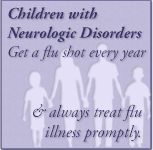Diagnosing Obsessive-Compulsive Disorder (OCD)
The American Psychiatric Association’s Diagnostic and Statistical Manual of Mental Disorders, Fifth Edition (DSM-5)1 is used by mental health professionals to help diagnose obsessive-compulsive disorder (OCD). It was released in May 2013 and replaces the previous version, the text revision of the fourth edition (DSM-IV-TR).
There were some changes in the DSM-5 for the diagnosis of OCD. In the previous guidelines, the person with OCD needed to know that the obsessive thoughts or impulses were only in their mind, now this requirement was removed, and the diagnosis notes whether the person is convinced they are true or not.
Here are the criteria in shortened form. Please note that they are presented for your information only and should not be used for self-diagnosis. If you are concerned about any of the symptoms listed, you should consult a trained health care provider with experience in diagnosing and treating OCD.
OCD means having obsessions, compulsions, or both.
Obsessions are defined by both of these aspects:
- Thoughts, impulses, or images that occur over and over again. These thoughts, impulses, or images are unwanted. They cause a lot of anxiety or stress.
- The person who has these thoughts, impulses, or images tries to ignore them or tries to make them go away.
Compulsions are defined by both of these aspects:
- Repeated behaviors (for example, handwashing, placing things in a specific order, or checking things over and over, like whether a door is locked) or thoughts (for example, praying, counting, or repeating words silently) over and over again or according to certain rules that must be followed exactly in order to make an obsession go away.
- The purpose of the behaviors or thoughts is to prevent or reduce distress, or prevent some feared event or situation. However, these behaviors or thoughts either are not connected to reality or clearly are extreme.
In addition, the following conditions must be met:
- The obsessions or compulsions are time-consuming (take more than an hour a day), or cause extreme distress or significantly interfere with the person’s daily life.
- The symptoms are not due to taking medicine or other drugs, or due to other medical conditions.
- If the person has another disorder at the same time, the obsessions or compulsions cannot be only related to the symptoms of the other disorder. For example, in order to be diagnosed with OCD, a person with an eating disorder must have obsessions or compulsions that are not related just to food.
The diagnosis should also note whether someone with OCD understands that the obsessive-compulsive thoughts might not be true, or whether he or she is convinced they are true (for example, someone might know that it’s not necessary to check a stove 30 times, but feel they must do it anyway).
The diagnosis should also note if someone with OCD has a current or past tic disorder. Up to 30% of people with OCD have a tic disorder during their life, particularly boys who show OCD symptoms in childhood. People with OCD and tic disorders tend to differ from those without a history of tic disorders regarding their symptoms, the presence of other disorders, and in how the OCD may run in the family.
For More Information
National Institute on Mental Health – Information on OCD
References
- American Psychiatric Association. Diagnostic and statistical manual of mental disorders, fifth edition: DSM-5. Washington, DC: 2013.
- Page last reviewed: May 11, 2017
- Page last updated: November 30, 2015
- Content source:



 ShareCompartir
ShareCompartir